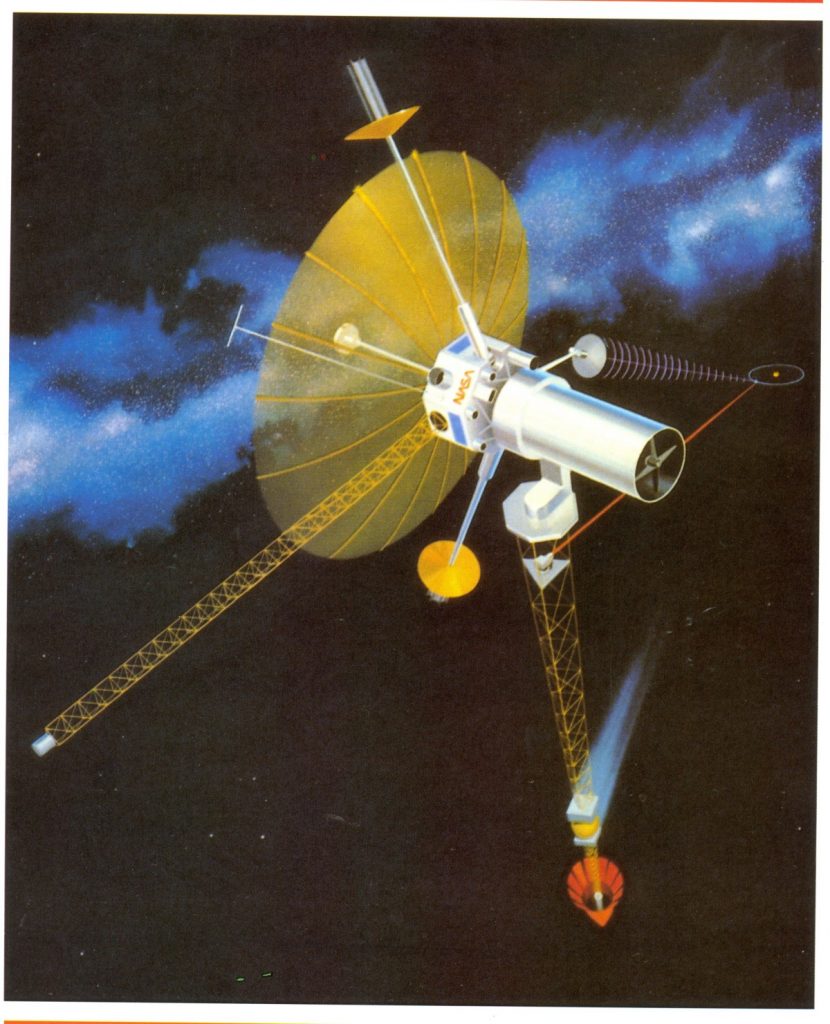Starting in the 1970s and running through much of the 1980’s, the Jet Propulsion Laboratory ran numerous studies of Thousand Astronomical Unit (TAU) spacecraft. These were somewhat akin to Voyager class probes, but with important differences. instead of small RTGs for power, they would use SP-100 class fission reactors, mounted many dozens of meters away at the end of long booms. Located at the center of mass of the system would be a bank of ion engines; the nuclear electric propulsion system would operate for *years* to boost these craft to extremely high speeds. Still, it would take decades for them to travel 1,000 AU from the Sun, many times further than Pluto. There, large optical telescopes would take parallax measurements on distant stars; by positioning numerous TAU craft in every direction, the measurement baseline would be vast, and precise distance fixes could be made for stars on the other side of the galaxy.
A number of TAU designs were examined, but the one shown here in JPL art seems to be pretty representative. These probes would have to be engineered with a high degree of both reliability and autonomy as their main observation missions would only begin something like 50 years after launch. Diagrams of a different design and more information were presented in US Spacecraft Projects #3.

Interesting project, but wauw 50 years after launch the main mission starts. Lots of people who started the project would not be around anymore. Would have set whole new standards for space missions.
Gaia will actually do considerably better with parallaxes, and it is in space and collecting data now.
If they had launched this in 1985. it would be literally obsolete within a year or so, 25 years before it reached its design goal.
I saw a presentation on this at JPL in the early 1980s, and for science they almost entirely talked about parallaxes. It is interesting that no one back then (including me!) thought about the implications to TAU of the gravitational lensing focal length of the Sun (548 AU). A TAU launched in 1985 would right now be able to use the Sun as a telescopic lens, something of great interest with the Breakthrough project and other thoughts about interstellar communication.